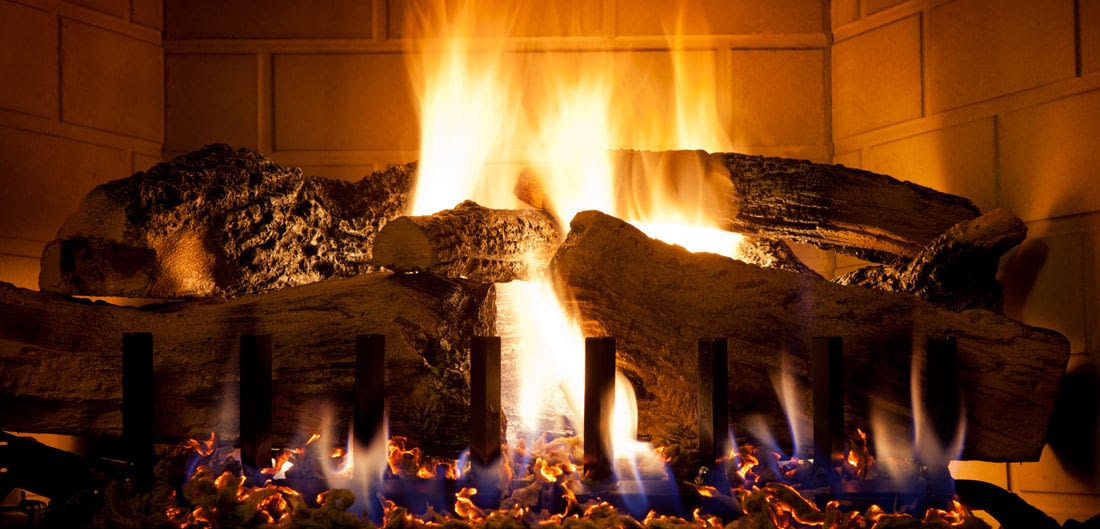- Insurance Services
- Auto, Home & Personal Insurance
- Business Insurance
- Business Interruption Insurance
- Business Owners Package Insurance
- Commercial Auto Insurance
- Commercial Property Insurance
- Commercial Umbrella Insurance
- General Liability Insurance
- Hotel & Motel Hospitality Insurance
- Professional Liability (E&O) Insurance
- Surety Bonds
- Workers' Compensation Insurance
- - View All Business
- Life Insurance
- Group Benefits
- About
- Policy Service
- Contact
Article originally posted on www.erieinsurance.com(opens in new tab)
![Erie Insurance]() Tagged With: Homeowners Insurance
Tagged With: Homeowners Insurance

If you’re a fan of old-fashioned fireside comfort, firewood may be an important part of your home heating experience.
However, firewood selection isn’t as “cut and dried” as it may seem, and care should be taken when selecting and handling the wood you burn in your home. The quality and safety of your fireside experience depends not only on the kind of wood you use, but how you use it, its source and how it’s stored.
Not All Firewood is Created Equal
Firewood is not a one-size-fits-all proposition: different species of wood have diverse characteristics that affect their suitability as fuel.
In general, for sustained heating, hardwoods are a better choice. Hardwoods include species like oak, maple and birch — trees that have leaves and lengthy growing cycles. Their wood is dense and strong and burns with greater heat and less smoke than softwoods.
Softwoods include evergreen species such as pine, spruce and fir. The wood from these trees is more resinous and burns much more quickly than hardwood. While softwoods are typically considered to be less suitable than hardwoods for home heating, they are usually easier to ignite and can be a good way to start a fire.
How Do I Get Good Firewood?
If you’re lucky enough to have a lot of spare trees on your property, assembling a cord or two of firewood for the winter may not be much of a challenge — provided, of course, that you’re handy with a chainsaw and don’t mind working up a sweat. For many people, though, buying firewood is the only option.
When purchasing firewood, it’s important to deal with a reputable supplier who can provide information about the wood — particularly its moisture content. Wood that has been thoroughly dried is referred to as “seasoned” firewood.
The drier the firewood, the easier and more efficient it is to burn. Contrary to misconception, the buildup of creosote — a contributing factor to chimney damage — results primarily from low-temperature fires rather than the type of wood burned, so it’s important to burn only seasoned firewood whenever possible.
Kiln-dried wood is often considered a great choice since it’s dried in a controlled environment to ensure moisture is evenly removed. If you’re buying firewood from a third party, ask how it was seasoned and for how long. If you’re buying undried wood (or cutting it yourself), make sure to dry it for at least six months to a year before use.
Storing Firewood the Right Way
Once you’ve collected your firewood, you’ve got to store it properly. If it’s unseasoned wood, it must be allowed to dry, and if it’s seasoned wood, you’ve got to make sure it stays dry.
Three factors are important to keep in mind when storing firewood:
- Keep it dry. As noted, dry wood burns much more efficiently, so keep your firewood out of the rain and snow by covering it with a waterproof tarp.
- Make sure it’s ventilated. Take care when weatherproofing your firewood so that it remains adequately ventilated. Cover only the top of the wood so that air can still pass through the spaces between the logs and carry away moisture.
- Keep it off the ground. Wood left on the ground will absorb moisture and begin to rot. It also becomes an inviting haven for creatures looking for a safe place to build nests.
If you’re serious about firewood, you may want to consider a shed or ramada where you can conveniently store your wood on a rack, pallet or solid slab to keep it dry and critter-free.
Fireplace and Woodstove Safety
Now that you’ve got your stash of well-stored, seasoned firewood, it’s time to get things blazing. But, before you strike that first match, make sure you’ve understood and observed the following safety tips:
- Inspect regularly. A clean and unobstructed chimney is crucial to safely heating your home with wood. Have your chimney and wood stove inspected and cleaned annually by a professional.
- Burn clean. Wood treated with chemicals of any kind can release harmful fumes when burned. Never burn treated or painted wood.
- Don’t overload. Excessive heat can damage stoves, hearths and chimneys. Be sure not to overload your fireplace or wood stove.
- Use barriers. If you’re burning in an open hearth, use a fireplace screen or glass door to prevent sparks from flying out of the fireplace. If you’re using a wood stove, keep the door closed while burning.
- Extinguish thoroughly. Before leaving the house or going to bed, completely extinguish your fire. Remember: if it’s still smoking, it’s still burning.
Safe handling of firewood not only helps prevent nasty mishaps and protects your home from damage, it also ensures burning efficiency and even household air quality.
Comfort and Security
As you look forward to enjoying the colder months by the mellow warmth of a cozy fire, always keep in mind that fire is inherently dangerous. With a bit of preparation, though, you can prop your feet up by the hearth knowing you’ve taken the necessary steps to ensure your peace of mind.
With Guaranteed Replacement Cost (GRC) insurance from Erie Insurance, you can take another important step toward peace of mind — one that can help get your home back to its previous state in the event of an accident. Contact us today about our, and we’ll show you how to make sure you’re covered all year round.
ERIE® insurance products and services are provided by one or more of the following insurers: Erie Insurance Exchange, Erie Insurance Company, Erie Insurance Property & Casualty Company, Flagship City Insurance Company and Erie Family Life Insurance Company (home offices: Erie, Pennsylvania) or Erie Insurance Company of New York (home office: Rochester, New York). The companies within the Erie Insurance Group are not licensed to operate in all states. Refer to the company licensure and states of operation information.
The insurance products and rates, if applicable, described in this blog are in effect as of January 2024 and may be changed at any time.
Insurance products are subject to terms, conditions and exclusions not described in this blog. The policy contains the specific details of the coverages, terms, conditions and exclusions.
The insurance products and services described in this blog are not offered in all states. ERIE life insurance and annuity products are not available in New York. ERIE Medicare supplement products are not available in the District of Columbia or New York. ERIE long term care products are not available in the District of Columbia and New York.
Eligibility will be determined at the time of application based upon applicable underwriting guidelines and rules in effect at that time.
Your ERIE agent can offer you practical guidance and answer questions you may have before you buy.

A better insurance experience starts with ERIE.
Haven’t heard of us? Erie Insurance started with humble beginnings in 1925 with a mission to emphasize customer service above all else. Though we’ve grown to reach the Fortune 500 list, we still haven’t lost the human touch.
Contact Sequatchie Valley Insurance LLC today to experience the ERIE difference for yourself.
